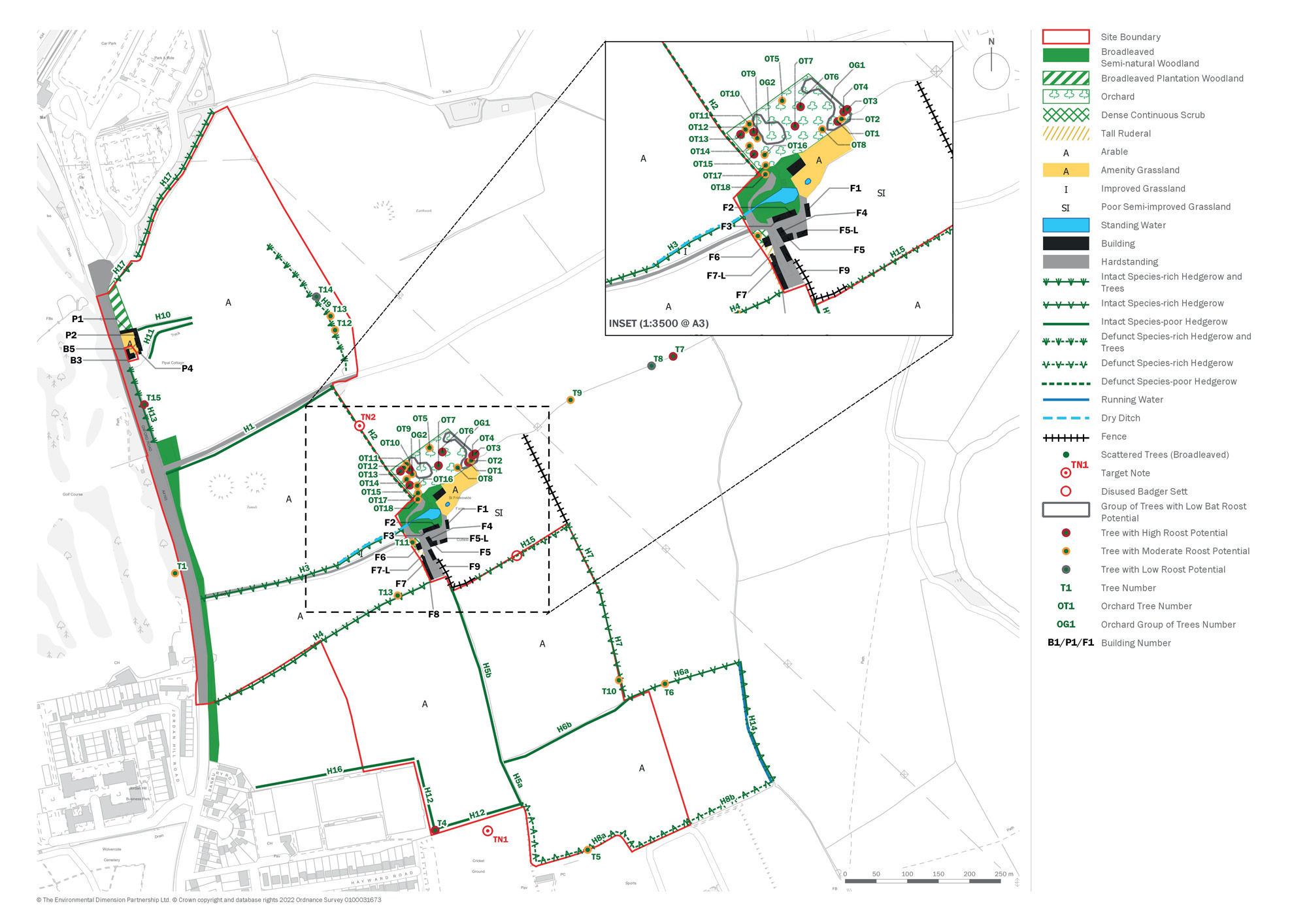Ecology and biodiversity
We have carried out surveys across the site over a number of years to build a detailed knowledge of the ecological and biodiversity aspects. A summary of these are set out below.
Ecology Baseline
- The site is predominantly arable farmland
- Fields are divided by species-rich and speciespoor hedgerows and block of woodland along western edge
- Bats have been recorded moving through the site; pipistrelle roosts recorded at St Frideswide’s and Pipal Barns
- Brown hairstreak butterflies breed within the hedgerows
- Small population of grass snakes
- Occasional barn owl roosts have been recorded within derelict buildings at St Frideswide; and
- Farmland birds breeding throughout the site, including skylark and yellow wagtail.
Ecology Mitigation
- Internal hedgerows retained with any loss offset through additional hedgerow and shrub planting
- Wildlife sensitive lighting scheme designed to limit effects on nocturnal species
- Bat roost at St Frideswide buffered from development by public open space
- Loss of Pipal Barn roost to be replaced in site
- Loss of woodland from the site’s western edge offset through greater area of planting within public open space, managed to ensure its future value
- Loss of breeding habitat offset through creation of skylark plots and arable field margins within nearby farmland
- Bird nesting features added to buildings and trees within the site
- Public open space will include areas of rough wildflower grassland, meadow and ponds, providing opportunities for pollinating insects, amphibians, barn owls, bats and grass snakes
- New shrub and tree planting will provide fruits and seeds for wildlife over autumn and winter
- New blackthorn planting will provide further breeding opportunities for brown hairstreak butterflies.
Biodiversity Net Gain
The prevalence of arable farmland within the site, combined with the large areas of proposed public open space (including the Cutteslowe Park extension), mean the development can achieve a significant net gain to biodiversity. The open space will be managed with wildlife in mind to maximise its value to nature. This gain will be secured through a long-term ecological management plan.
Our proposals sections
- Introduction
- Our proposals
- The development
- The scheme parameters
- Masterplan
- Character and placemaking
- Responsible ownership & stewardship
- A sustainable development
- Transport
- Sustainable transport improvements
- Green infrastructure
- Site heritage
- Ground conditions and utilities
- Ecology and biodiversity
- Landscape and visual
Habitat plans

Click image to enlarge Pinch image to enlarge